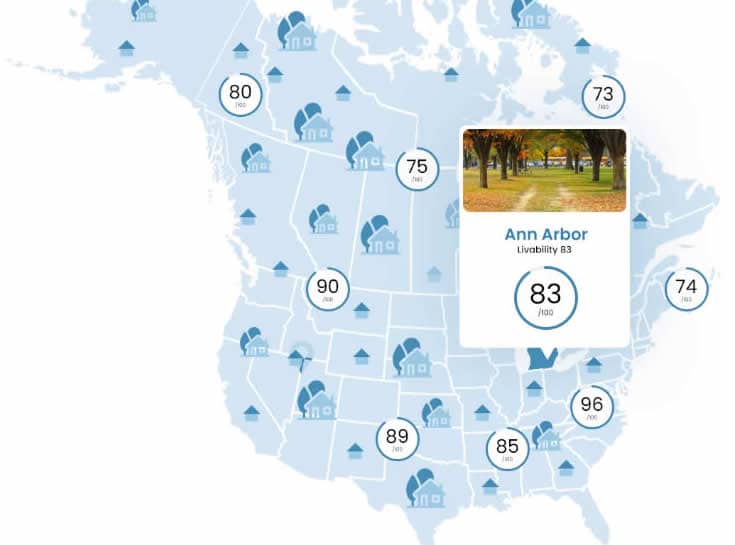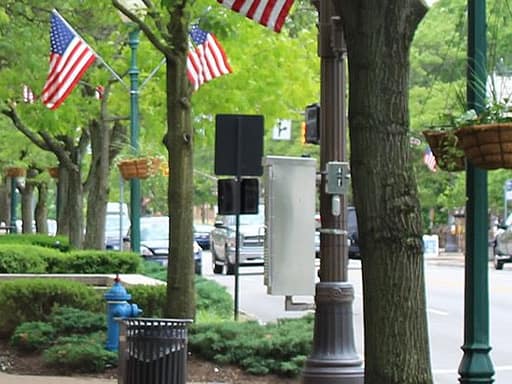What is Livability and How Do You Measure It?
Livability is a term that encapsulates the quality of life that individuals and families experience in a particular area. It encompasses various factors that contribute to the overall well-being, satisfaction, and happiness of residents.
As cities and communities strive to improve the lives of their inhabitants, understanding and measuring livability has become increasingly important. Let’s explore the concept of livability, delve into its key components, and discuss how it is measured. We will cover critical categories including amenities, commute time, cost of living, crime, employment, health & safety, housing, schools, and user ratings.
Understanding Livability
Livability refers to the overall quality of life in a specific location, which encompasses both tangible and intangible elements that make a place suitable and enjoyable to live in. It includes a broad range of factors that affect the daily lives of residents, such as access to essential services, environmental quality, safety, and economic opportunities. Livability can vary greatly from one place to another, influenced by geographic, cultural, economic, and political contexts.
The concept of livability is not just about maintaining the status quo; it’s about thriving and achieving a high standard of living. It goes beyond basic needs to include factors that enhance life satisfaction, community cohesion, and personal fulfillment.
Key Components of Livability
To gain a deeper understanding of livability, it is essential to break it down into its core components. Each of these categories contributes to the overall livability of a location in unique ways.
Amenities
Amenities are the services and facilities that support daily life and enhance the convenience and enjoyment of living in a particular area. They include parks, libraries, recreational facilities, shopping centers, restaurants, and public transportation.
-
Parks and Recreation: Access to parks and recreational facilities is crucial for promoting physical health and social interaction. Green spaces and fitness facilities provide a place for exercise, relaxation, and community events, contributing to the physical and mental well-being of residents.
-
Cultural and Social Amenities: Museums, theaters, and cultural centers enrich the community by offering educational and recreational opportunities. They play a significant role in enhancing the cultural vibrancy and diversity of a location.
-
Shopping and Dining: A variety of retail and dining options are important for meeting the everyday needs of residents and providing leisure activities. Vibrant commercial areas also support local economies and create job opportunities.
-
Public Services: Access to libraries, community centers, and other public services enhances the quality of life by providing resources for education, personal development, and community engagement.
Commute Time
Commute time is a critical factor in livability, as it directly impacts residents’ daily lives and work-life balance. Long commutes can lead to stress, decreased productivity, and reduced time for family and leisure activities.
-
Public Transportation: Efficient and reliable public transportation systems reduce commute times and offer a convenient alternative to driving. They also help reduce traffic congestion and environmental pollution.
-
Walkability and Bikeability: Neighborhoods that are walkable and bike-friendly promote healthier lifestyles and reduce dependence on cars. Access to safe walking and biking paths makes it easier for residents to commute and engage in physical activity.
-
Proximity to Work and Services: Living close to work, schools, and essential services reduces travel time and enhances convenience. This proximity can significantly improve the overall quality of life.
Cost of Living
The cost of living is a measure of how expensive it is to live in a particular area, including the cost of housing, food, transportation, healthcare, and other essential expenses. It is a crucial factor in determining the affordability and livability of a location.
-
Housing Costs: The cost of renting or buying a home is a significant component of the cost of living. Affordable housing options ensure that residents can live comfortably without spending a disproportionate amount of their income on housing.
-
Food and Grocery Prices: The availability and cost of food and groceries impact the overall cost of living. Access to affordable and healthy food options is essential for the well-being of residents.
-
Healthcare Costs: The cost of healthcare services, including insurance, medications, and medical care, is an important consideration for residents. Affordable healthcare ensures that individuals can access the care they need without financial hardship.
-
Transportation Costs: The cost of commuting, including public transportation fares, fuel, and vehicle maintenance, affects the overall cost of living. Affordable and efficient transportation options contribute to the financial well-being of residents.
- Taxes: Sales and income tax rates vary by state and play a role in the overall cost of living.
Crime
Safety and security are fundamental components of livability. Low crime rates contribute to a sense of well-being and security, making an area more attractive to residents and businesses.
-
Crime Rates: Lower crime rates are associated with higher livability scores. Areas with low rates of violent crime and property crime provide a safer environment for residents, reducing the risk of harm and financial loss.
-
Law Enforcement and Community Policing: Effective law enforcement and community policing efforts enhance safety by deterring crime and building trust between police and residents. Programs that promote community engagement and crime prevention contribute to a safer community.
-
Emergency Services: Access to responsive and effective emergency services, including police, fire, and medical services, is crucial for maintaining safety and security. Quick response times and well-trained personnel can save lives and reduce the impact of emergencies.
Employment
Employment opportunities are a key factor in livability, as they provide residents with the means to support themselves and their families. Access to a diverse job market and career growth opportunities enhances the economic well-being of a community.
-
Job Availability: A diverse and robust job market offers residents a range of employment options, reducing unemployment and underemployment. Access to jobs in various industries and sectors supports economic stability and growth.
-
Income Levels: Competitive wages and salaries contribute to the financial well-being of residents. Higher income levels allow individuals and families to afford housing, healthcare, education, and other necessities, improving their quality of life.
-
Career Development: Opportunities for career advancement and professional development are important for personal and economic growth. Access to training programs, educational institutions, and career resources supports long-term success and job satisfaction.
-
Business Environment: A supportive business environment that encourages entrepreneurship and innovation attracts businesses and promotes job creation. Policies that support small businesses and startups contribute to a thriving local economy.
Health & Safety
Health and safety are critical aspects of livability, encompassing access to healthcare, environmental quality, and overall well-being. Ensuring that residents have access to quality healthcare and live in a safe, healthy environment is essential for a high quality of life.
-
Healthcare Access: Access to quality healthcare services, including hospitals, clinics, and specialists, is vital for maintaining good health. Affordable healthcare and health insurance options ensure that residents can receive the care they need without financial strain.
-
Environmental Quality: Clean air, water, and soil are fundamental to good health. Areas with low pollution levels and access to clean water and natural spaces provide a healthier environment for residents.
-
Public Health Initiatives: Programs that promote health and wellness, such as vaccination campaigns, fitness programs, and health education, contribute to the overall well-being of the community. Public health efforts that address issues like obesity, substance abuse, and mental health are important for maintaining a healthy population.
-
Safety Measures: Implementing safety measures, such as traffic calming, pedestrian crossings, and emergency preparedness plans, enhances the safety of residents. Efforts to reduce accidents and injuries contribute to a safer living environment.
Housing
Housing is a fundamental component of livability, encompassing affordability, quality, and availability. Access to safe, affordable housing is essential for the well-being and stability of residents.
-
Affordability: Affordable housing ensures that residents can live comfortably without spending a disproportionate amount of their income on housing costs. Programs that support affordable housing development and provide assistance to low-income residents help address housing affordability challenges.
-
Quality: The quality of housing, including construction standards, maintenance, and amenities, impacts the comfort and safety of residents. Access to well-built and well-maintained housing contributes to a higher quality of life.
-
Availability: A diverse range of housing options, including apartments, single-family homes, and affordable housing units, meets the needs of different residents. Ensuring that there is enough housing to accommodate population growth helps prevent housing shortages and rising costs.
-
Neighborhood Stability: Stable neighborhoods with low vacancy rates and a mix of housing types contribute to a sense of community and belonging. Efforts to prevent foreclosures and support homeownership help maintain neighborhood stability.
Schools
Education is a key factor in livability, as it provides residents with the skills and knowledge needed for personal and professional success. Access to quality education is essential for the development and well-being of children and adults alike.
-
School Quality: High-quality schools with well-trained teachers, modern facilities, and strong academic programs provide students with a solid education. Access to advanced placement courses, extracurricular activities, and special education services enhances educational outcomes.
-
Access to Education: Access to education, including early childhood education, K-12 schools, and higher education institutions, is crucial for personal and professional development. Ensuring that all residents have access to educational opportunities supports long-term success and economic stability.
-
Educational Support Services: Support services, such as tutoring, counseling, and after-school programs, help students succeed academically and personally. Programs that support students with special needs and address issues like bullying and mental health contribute to a positive learning environment.
-
Community Involvement: Community involvement in education, including parent-teacher associations, school boards, and volunteer programs, enhances the quality of education and fosters a sense of community. Efforts to engage parents and community members in education support student success.
User Ratings
User ratings and reviews play an increasingly significant role in assessing the livability of a location. Unlike traditional metrics that rely on statistical data and objective analysis, user ratings provide a qualitative, subjective perspective that reflects the personal experiences and opinions of individuals who live in or have visited a particular area. This feedback is invaluable for understanding the nuances of daily life that might not be captured by quantitative measures.
-
Highlighting Specific Strengths and Weaknesses: User reviews can pinpoint specific aspects of a community that are either particularly strong or need improvement. For example, they can reveal if a neighborhood has a vibrant cultural scene, well-maintained parks, and excellent restaurants, or if it struggles with issues like inadequate public transportation, limited shopping options, or a lack of recreational facilities. These detailed evaluations help potential residents and city planners understand what makes an area desirable or challenging to live in.
-
Personal Experiences and Resident Satisfaction: User ratings reflect the lived experiences of residents, which can be crucial for understanding the day-to-day realities of life in a particular area. These ratings often cover aspects like the friendliness of neighbors, the quality of local services, and the general atmosphere of the community. For instance, a neighborhood might have excellent statistical scores for amenities and safety, but if residents consistently report issues with noise, lack of community engagement, or dissatisfaction with public services, these qualitative insights can significantly impact the perceived livability of the area.
Guiding Potential Residents: For people considering moving to a new area, user ratings are a valuable resource that provides a real-world perspective on what it’s like to live there. These reviews can offer crucial information about local amenities, safety, community spirit, and overall satisfaction with the quality of life. Potential newcomers can gain insights into factors that are important to them, such as the quality of schools, availability of recreational activities, or the presence of a supportive community network.








